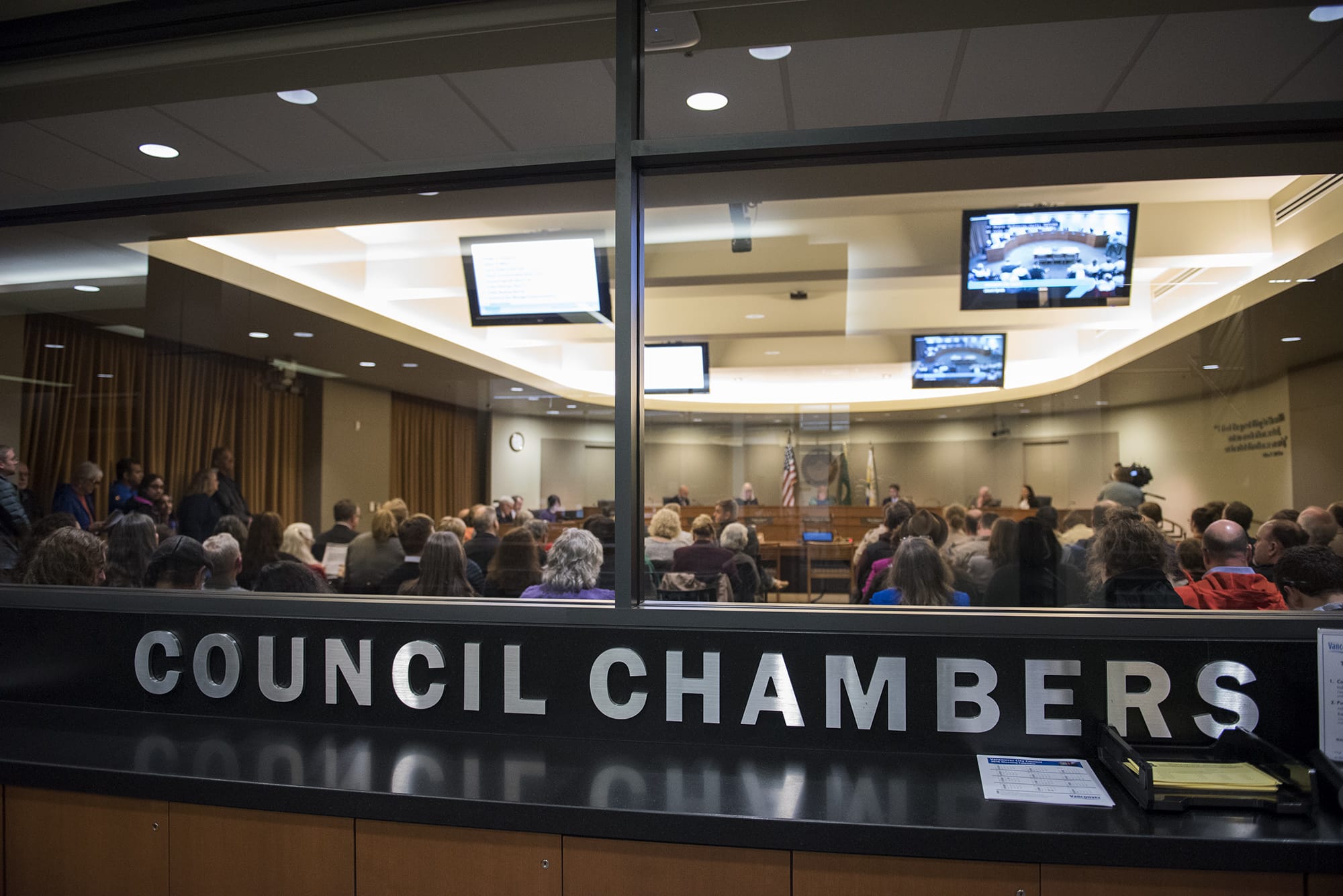The latest report from Vancouver’s contracted ambulance company contained a bright spot: Opioid overdoses in the region appear to be dropping so far in 2019 compared with the year prior.
During an annual report from American Medical Response, or AMR, Dr. Lynn Wittwer, Clark County medical program director, reported that ambulance first responders reported 243 possible opioid calls in 2018. From January to June 2019, that number dropped to 76 calls — on track for far fewer opioid overdose responses this year.
“This year, we’re less than half, to this date. Things are possibly improving out there,” Wittwer said.
That’s not true of the rest of the state, where the number of EMS opioid responses are on track to surpass last year. Washington’s first responders have logged 3,221 opioid overdoses as of June. If that rate continues, 2019’s opioid responses will exceed 2018’s total of 5,547 calls.
Clark County is bucking statewide opioid death trends, too. In 2017 — the most recent available data — Washington’s rate of opioid overdose deaths hit 9.6 per 100,000 people. The county’s rate was a little better, with 7.3 overdose deaths out of 100,000 people.
Wittwer partially credits the drop to the increasing availability of Naloxone, a drug that when administered immediately can counteract the effects of opioids and pull a user’s body back from the edge of a fatal overdose.
All EMTs in Clark County carry Naloxone, also called by its brand name Narcan. Ordinary people, too, can obtain the drug from the health department if they or a loved one is battling an addiction.
“As of 2017, we have shown a steady decrease in the county from opioid deaths, unintentional opioid deaths,” Wittwer said. “The state has seen a steady increase from 2013 to present, and we’ve shown a steady decline … (since) about the time we flooded our EMS system with Narcan.”
Hitting benchmarks
All told, the annual ambulance report delivered to the Vancouver City Council on Monday evening was ultimately optimistic.
For both high-priority and low-priority calls, the region’s ambulances hit their response targets last year. For Priority 1 and 2 calls in “High Density” areas — more populated areas in the county, mostly within Vancouver city limits — EMTs made it to the scene in less than 10 minutes 90.98 percent of the time. They’re contractually obligated to make it within 10 minutes on at least 90 percent of calls.
For the high-priority calls in “Low Density” areas, or the more rural areas north of Vancouver city limits and between the smaller cities in Clark County, ambulances made it to the scene within the contractually obligated 20 minutes 93.27 percent of the time.
Lower priority calls in both high-density and low-density areas also saw their ambulance response times hit their targets.
In total, AMR ambulances responded to a total of 51,026 calls for service last year.
The cost per ride was middle of the road within the local service area compared to other comparable jurisdictions. Ambulance transport from a scene to the hospital cost the Clark County rider $1,196 last year. That’s within the typical range; in Spokane, the same ride would cost around $750; in Pierce County, it would cost just over $2,500.
“You kind of have a sense of what it costs,” said Vancouver Fire Department Chief Joe Molina, who also addressed the council Monday.
In July, the fire department delivered its own report on 2018 response times to the city council. That report revealed some snags in the department’s attempts to respond to its highest-priority calls within 8 minutes, and the firefighters fell a little short of the 90 percent goal — they were able to hit that benchmark within 8 minutes, 18 seconds.
At the time, Molina said that fire apparatus were struggling to get through worsening traffic as Vancouver’s population grows, a problem that apparently isn’t impacting ambulances as badly.
“It’s nothing to panic about, but we are experiencing a new normal in terms of our response times,” Molina told the council in July.




